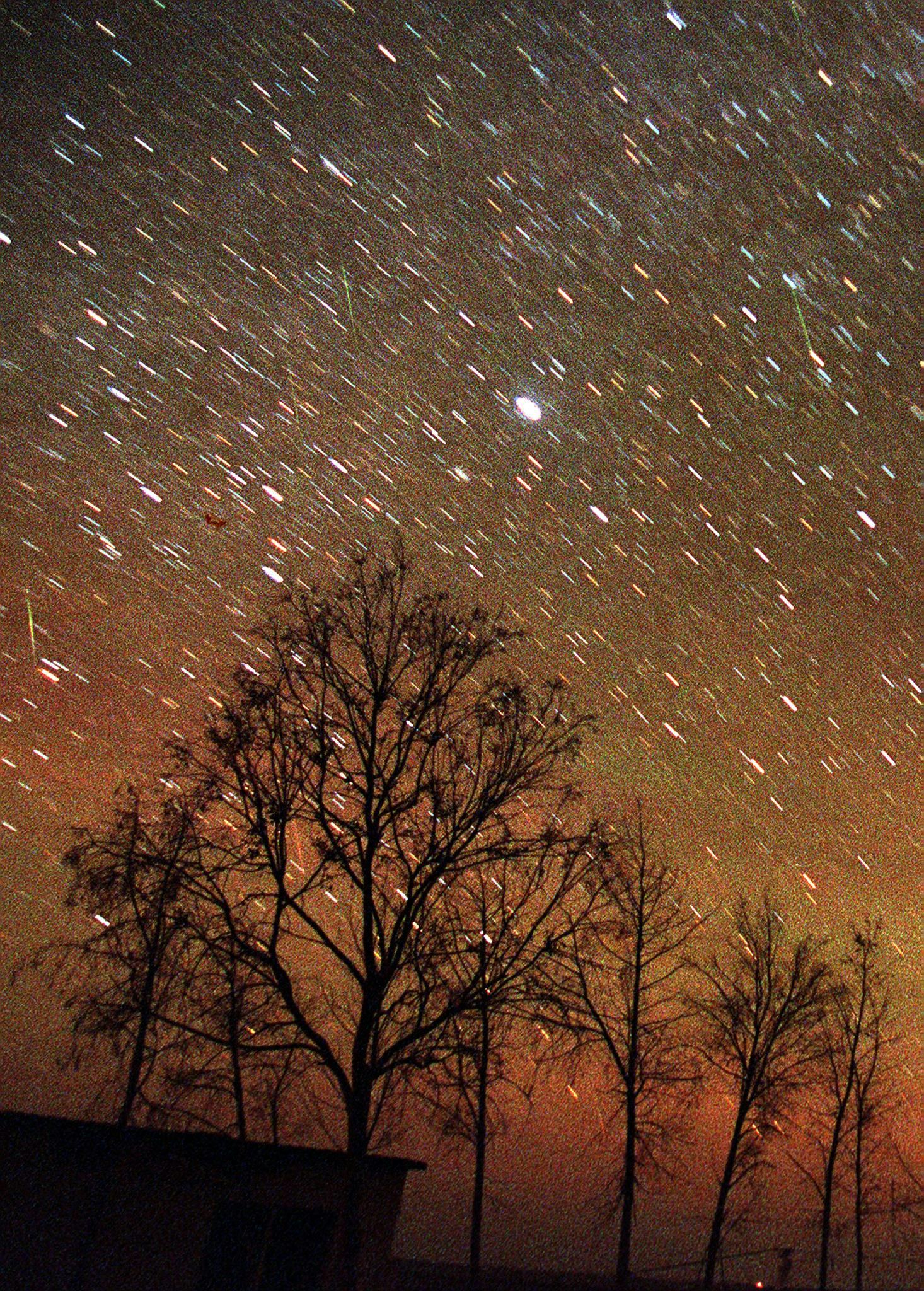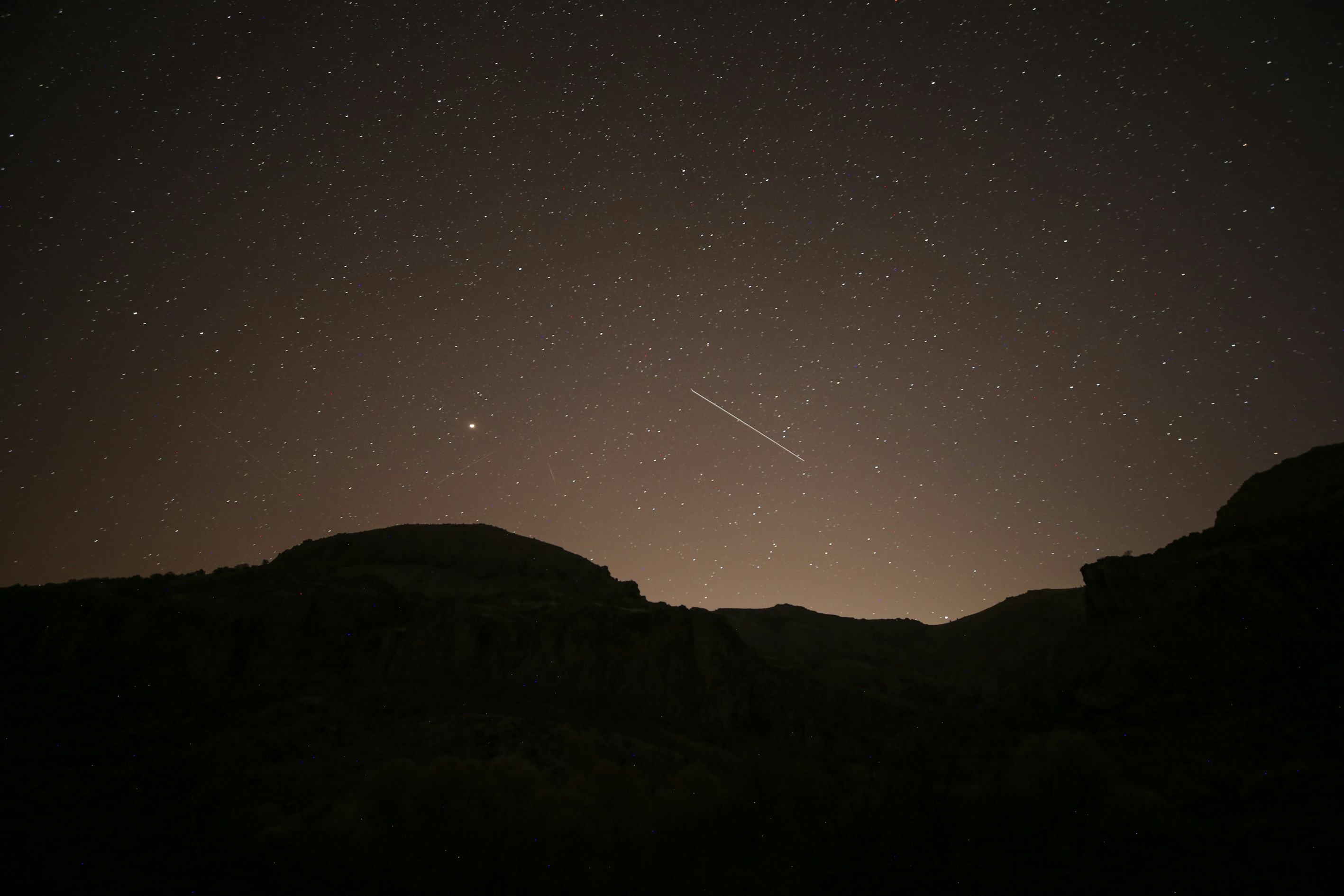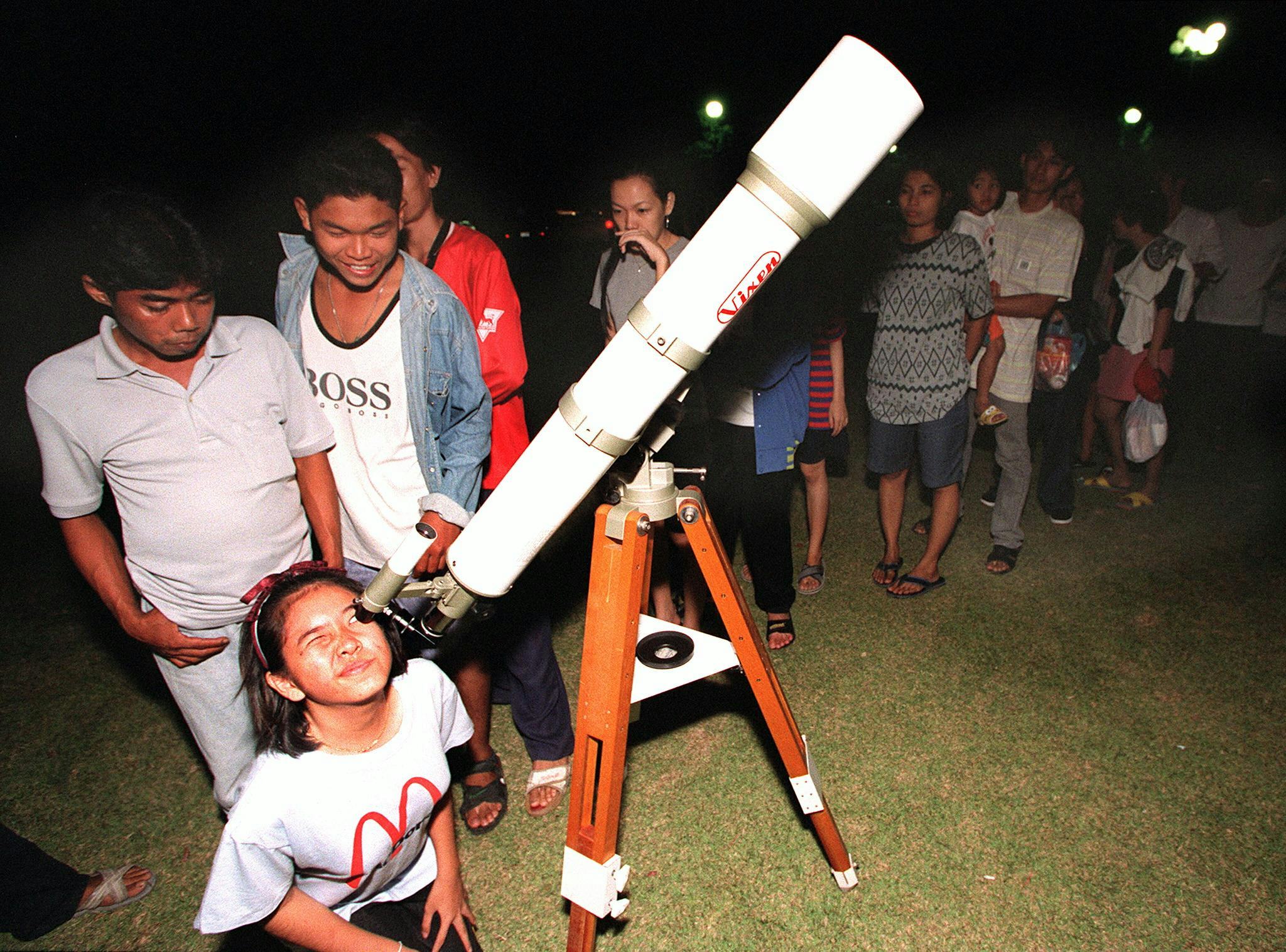
Cancel your plans because Earth’s atmosphere is putting on a stunning light show this weekend.
This Friday and Saturday the annual Leonid meteor shower will reach its peak, and this dazzling annual display is particularly known for its bright fireballs and long, colorful trails of light streaking close to the horizon. Those willing to brave the late autumn chill will likely see a meteor every few minutes.
Here’s everything you need to know about the awe-inspiring Leonids, and why they’re definitely worth bowing out of some late-night social engagements.
What are the Leonids?

Every November Earth’s orbit crosses a stream of dusty debris left in the wake of a comet called 55P/Tempel-Tuttle. Much like the continually disheveled Pigpen in Charles Schulz Peanuts, Tempel-Tuttle is such a mess that it leaves a trail of dust along its entire 33-year solar orbit. So even when passing planets stumble across it’s dusty wake, the comet is long gone.
These grains of dust and tiny bits of rock eventually smack into Earth’s atmosphere at tens of thousands of miles per hour. And at that speed, hitting even the thinnest layers of the upper atmosphere creates tremendous friction, which generates equally tremendous heat. The temperature around the errant bit of space dust soars high enough to vaporize it — and those final, blazing moments create a brilliant burst of light in the night sky.
During this weekend’s peak, the Leonids will average about 15 meteors an hour, and be prepared: This meteor shower is known for its awesome pyrotechnics. The Leonids tend to include more slightly-larger-than-average meteoroids than most showers, but these bits of space flotsam are still small enough to completely disintegrate in the upper atmosphere, creating colorful fireballs that last longer.
Compared to most other annual showers, the Leonids also produce more “Earth-grazers,” which sounds alarming but simply means a meteor that appears close to the horizon. The Leonids also feature some of the fastest meteors with some traveling in excess of 158,000 miles per hour.

How To See the Leonid Meteors
Every year in mid-November, Earth passes through the densest part of 55P/Tempel-Tuttle’s messy debris trail. This year’s peak nights will be Friday, November 17, and Saturday, November 18, and the show kicks off around midnight local time and lasts through dawn. For the best views, find the darkest spot you can, away from city lights, headlights, flashlights, and glowing phone screens, and give your eyes about 20 or 30 minutes to adjust to the darkness.
The Leonid meteors will look like they’re raining down from a point somewhere in the constellation Leo, which appears in the eastern sky in the hours before dawn. This is an optical illusion, but it’s why we call these meteors the Leonids and not “the Tempel-Tuttleids,” which doesn’t exactly roll off the tongue. While it may seem logical to look toward Leo, you should actually look pretty much anywhere else. Meteors close to the radiant point will look shorter, while the Leonids elsewhere in the sky will be longer and more visible.
As a bonus, that means you don’t need to worry about finding the constellation Leo to enjoy the light show. Instead, NASA says to “orient yourself with your feet toward the east, lie flat on your back, and look up, taking in as much of the sky as possible.”







